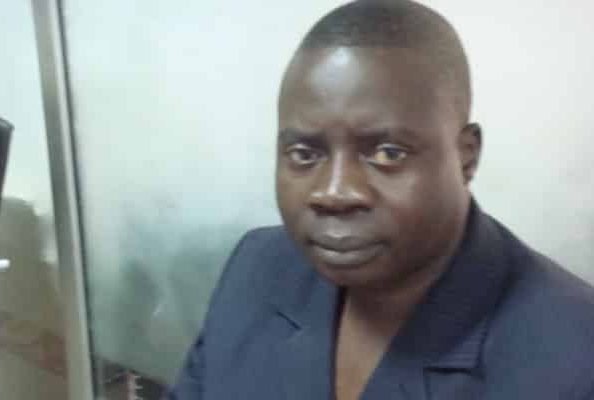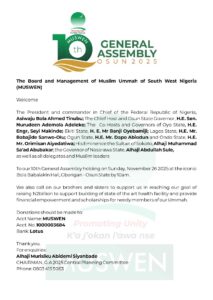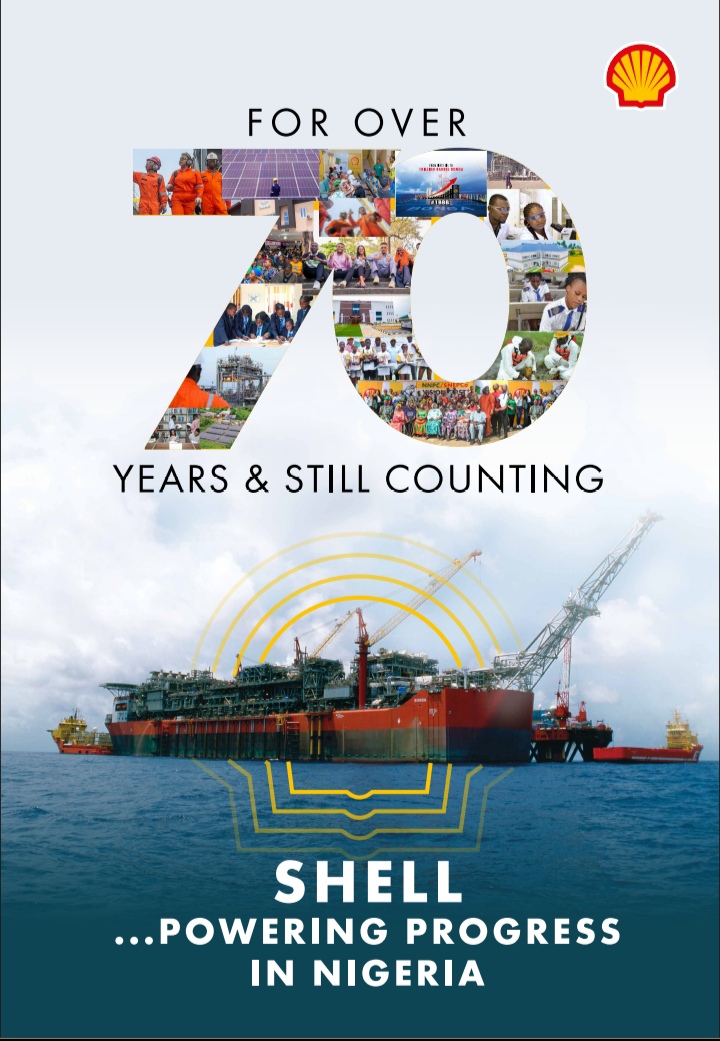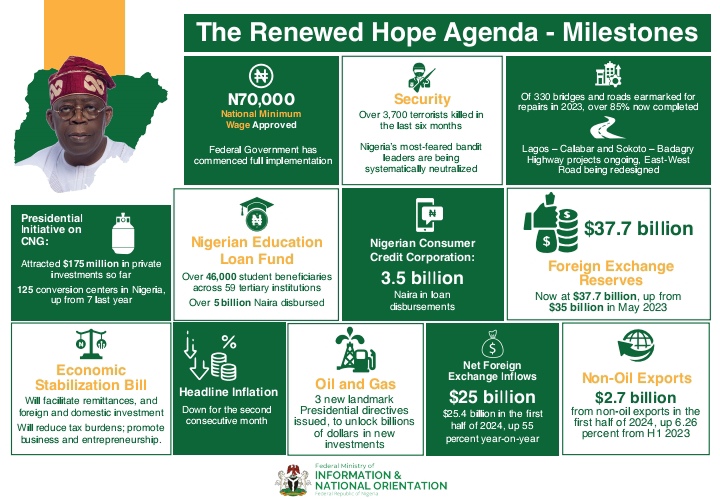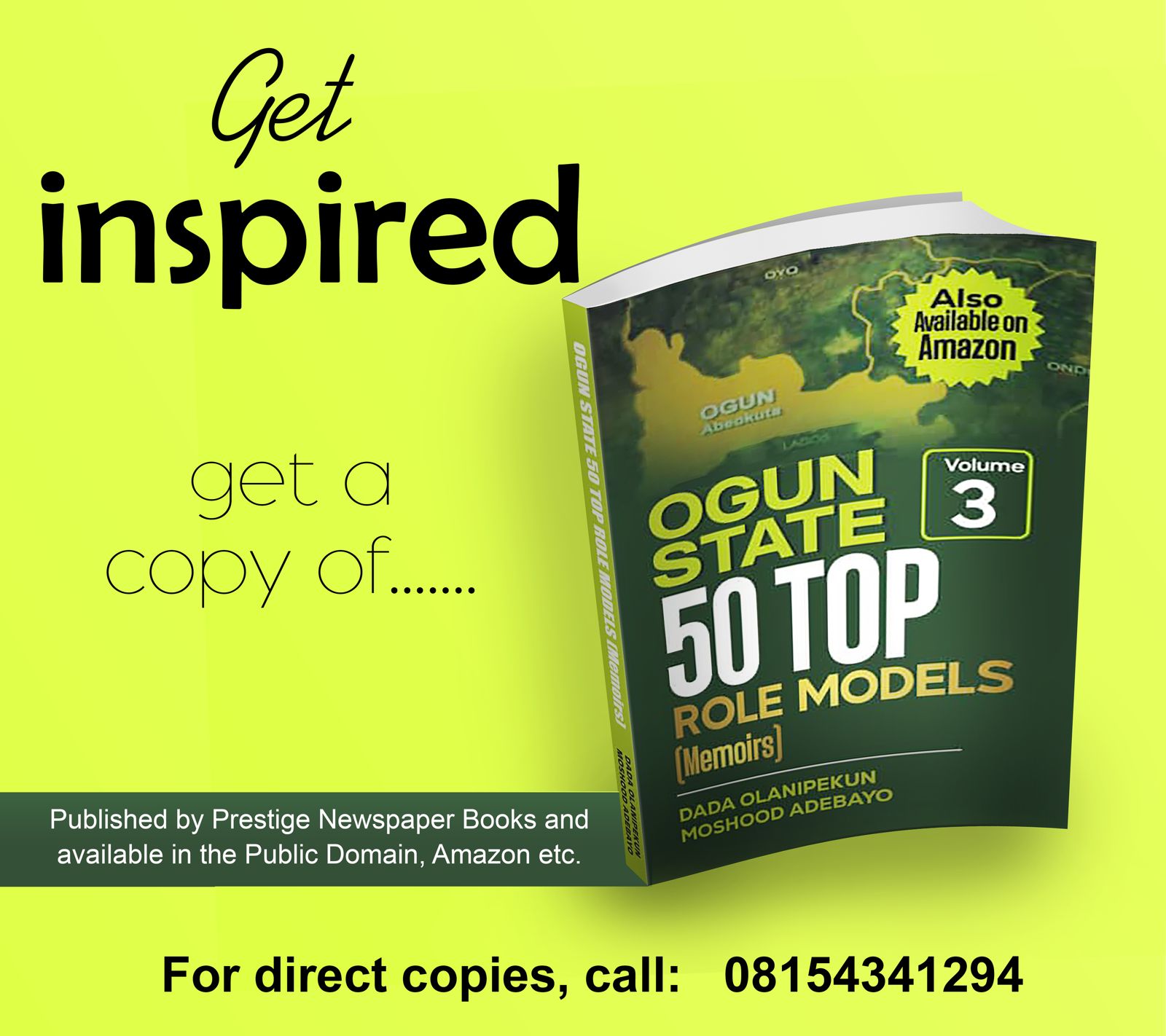Being the paper Presented by ADEWALE ADEOYE at the 2-Day Training of Media Practitioners on Reporting Indigenous Issues orgainsed by Centre for Human Rights and Civic Education, CHRICED, Journalists for Democratic Rights, JODER, and the International Press Centre, IPC, with the support of John D and Catherine T/MacArthur Foundation held in Abuja between November 20 to 23, 2022
I greet everyone here including the representatives of indigenous peoples. I speak on my topic which I think is timely given the situation in our country, Nigeria and around the world. We are often confronted with the questions:
Who are the indigenous peoples?
What distinguishes them from other peoples and why are Indigenous peoples a critical focal point of human development across the world?
What is the history of the modern day campaign for the rights of Indigenous peoples all over the world?
What is the attitude of the International Community to Indigenous Issues and Indigenous peoples?
Are there indigenous peoples in Nigeria and who are they?
What are their fears and aspirations?
In what way can the media include Indigenous issues and Peoples in the national and local discourse of the Social and political economy?
Historic Reflections on Indigenous Peoples
Let me state that there are indigenous peoples all over the continents of the world who have lived for generations being the first to occupy a particular territory. They are the first Nation. While they could be found all over the world where human habitation is possible, many Indigenous peoples have been lost to time and history while many are struggling to protect their identities expressed in the form of language, culture, civilizations, indigenous knowledge and time-honoured values and philosophies which they wish to preserve even in the face of threats. It is estimated today that there are 5,000 to 7,000 languages spoken by billions of peoples across the world which explains the form of cultural identity and diversity of the world we live. UNESCO says an estimated 2,500 languages face the threat of extermination even as many of them lose the sociology from whence languages evolved as a means of intellectual heritage to conceive and interpret matter and phenomenon. Across the world, it is believed that there are some 300 million indigenous peoples. Nigeria is home to many indigenous peoples who have lived in their ancestral homes for centuries, had a system of thoughts and processes, identification of matter, being and essence, including a system of administration or government sustained over centuries. Our history did not start from the time of colonial powers who invaded our land in the 19th century. The relationship between the indigenous peoples of Nigeria and the creator of heaven and earth, their contact with matter and the environment they live, did not start from the time Christianity and Islam came in to the world. Indigenous peoples had their own philosophy of religion long before the two great religions. The history of indigenous peoples is not just about religion or wars, it was also about art, science, technology, trade, commerce, epistemology and philosophy.
Who are the Indigenous peoples? They are identified by their ancestral land, their dependence on their immediate environment for livelihood, their language, culture and spirituality with shared history and dominion over a territory they had lived for centuries being the first land owners. There is sometimes conflict in defining who the indigenous people are. However, the United Nations Economic and Social Council Sub Commission on Prevention of Discrimination and Protection of Minorities define the Indigenous peoples thus:
‘Indigenous communities, peoples and nations are those which, having a historical continuity with the pre-invasion and pre-colonial societies that have developed on their territories, consider themselves distinct from other sectors of the societies now prevailing in those territories, or parts of them. They form at present non dominant sectors of society and are determined to preserve, develop and transit to future generations their ancestral territories, and their ethnic identity, as the basis of their continued existence as peoples, in accordance with their own cultural patterns, social institutions and legal systems”1
The International Labour Organisation (ILO) Convention 169 ‘Concerning Indigenous Peoples in Independent Countries’ identifies Indigenous peoples as ‘Tribal peoples in countries whose social, cultural and economic conditions distinguish them from other sections of the national community, and whose status is regulated wholly or partially by their own customs or traditions or by special laws of regulations, or peoples in countries who are regarded by themselves or others as indigenous on account of their descent from the populations that inhabited the country, or a geographical region to which the country belongs at the time of conquest or colonization or the establishment of present state boundaries and who, irrespective of their legal status, retain, or wish to retain, some or all of their own social, economic, spiritual, cultural and political characteristics and institutions.’ Indigenous peoples have built their own civilizations for centuries, their own sociology, their science, medicine and art. In this regard they have their own experts. Of concern is the identification of indigenous peoples through Spirituality, their interpretation of the material relations around them over a significant period of time which has become their way of life. Spirituality is also a form of consciousness and has been defined as the ‘the highest form of consciousness, and spiritual consciousness is the highest form of awareness. In this sense a dimension of traditional knowledge is local knowledge, but knowledge of the universal as expressed in the local. In indigenous and local cultures, experts exist who are peculiarly aware of nature’s organizing principles, sometimes described as entities, spirits or natural law. Thus, knowledge of the environment depends not only on the relationship between humans and nature, but also between the visible world and the invisible spirit world.’2 Indigenous peoples are also distinguished by their own traditional knowledge of things, time and space. Their ‘Local knowledge embraces information about location, movements and other factors explaining spatial patterns and timing in the ecosystem, including sequences of events, cycles and trends.’ To indigenous peoples “direct links with the land are fundamental, and obligations to maintain those connections form the core of individual or group identity.”3
Indigenous Peoples in Nigeria
There are indigenous peoples in Nigeria. They are the First Nations. For some of them, the context of their migration into their current territories is unknown to time and living memory. The present space referred to as Nigeria did not come into existence until January 1, 1914 when the Southern and Northern protectorates became one single administrative unit. Long before then, indigenous peoples had lived in their homestead for thousands of years. They had a system of government, a system of commerce, military and political economy. The Hausa States of Biram Daura, Gobir, Kano, Katsina, Rano, Zazzau flourished in the 13th and 14th centuries. The first of the Hausa city states emerged around 1000 years ago – founded by Bayajidda legend and the six sons, It was situated between the Niger River and Lake Chad, extended from today’s Nigeria to some parts of Mali and Eastern part of Kanem-Bornu. By the 14th century, Kano was one of the most powerful city state owned and managed by indigenous peoples. Kwararafa (Kororofa) was a multi-ethnic state that existed in the Benue River Valley now located in central Nigeria. It comprised of several ethnic groups in today’s Middle Belt prominent among them was the Junkun, with Wukari as its headquarters. Kwararafa waged wars of survival. It was noted to have attacked Zaria, Katsina and even had confrontation with Bornu in the ancient intra-tribal wars. The Kwararafa multi – ehnic state flourished in the 1500s. The successor state, the Wakari Federation was established in 1840 and was one of the most powerful kingdoms in the 17th century. The Benin kingdom is well known for its glorious past. The Benin Kingdom established by Oranmiyan, who came from Ile-Ife was one of the oldest states in West Africa, growing out of the Edo Kingdom of the 11th century before British Invasion of 1897. We are not unfamiliar with the Oyo Empire which extended to Ghana and reached the peak of its power in the 17th century. The El Kanemi Empire thrived as a sovereign state for many centuries. It extended to the Southern part of Libya and was noted for its scholarship and interchange of ideas with the University of Timbuktu, one of the most ancient centres of learning known to the world. So it is clear from history that indigenous people were not ‘civilized’ by those who came to conquer them. They had a rich, timeless heritage.
The Nigerian State and the Crisis of Identity and survial of Indigenous Peoples
The rise of the modern states carved after the 1885 Berlin Conference has led to the emergence of states where land and resources are defined within the context of colonial history and sustained by the emerging leaders of the new states. The rise of a political and economic order fashioned for the protection of the new class of rulers, to promote order, international trade and profit is backed with a redefinition of land and resource ownership through laws and conventions designed with very little or no consultation with the indigenous peoples. Today, indigenous peoples are carved into states and local authorities without their free, prior and informed consent. The post colonial state has continued to sustain this pattern of balkanization. In Nigeria, we have seen the emergence of local, state and national authorities that hold firmly the reign of power and authority with little or no consultation with indigenous people on how the states and boundaries were conceived in the first place. Representation is often defined by the same state that designed electoral institutions organized to ensure elected people are not necessarily the representatives of the people.
The control of resources, land and waters are in the altar of the new authorities who have little or no respect for indigenous peoples’ rights. Today, Indigenous peoples continue to suffer different forms of deprivation, exploitation, neglect and even repression on their own land. Their ancestral assets are proclaimed as owned by the state, they are denied access and resistance to centralism is often met with violence and even expulsion from their land. “Indigenous peoples are more likely to receive inadequate health services and poor education
– if any at all. Economic development plans often bypass them or do not take into sufficient consideration their views and particular needs. Other decision-making processes are often equally contemptuous of or indifferent to their contribution. As a result, laws and policies designed by majorities with little regard to indigenous concerns frequently lead to land disputes and conflicts over natural resources that threaten the way of life and very survival of indigenous peoples.”4 There have been various attempts by indigenous people to rekindle their identity in the colonial and post-colonial Nigeria. With the emergence of Nigeria in 1914, the colonial powers sought to subdue and subsume traditional identities under the new order. Nationalities were defined as ‘tribal’, indigenous languages were categorized as ‘vernacular’, indigenous cultures and values were deemed ‘primitive’, ‘uncivilised’, ‘ancient’ and in some instances they were seen as threats to the new authorities. However, these were not elements that could be totally suppressed. Even in their confused state, the colonized sought to create their own identities. The earlier part of the 20th century saw the establishment of some ethic groups, the Ibibio State Union in 1928, Urhobo Progressive Union in 1931, the Igbo Union in 1936, the Tiv Progressive Union in 1931. The Egbe Omo Oduduwa was established in 1945. In 1942, the Yoruba Internal Society was established. The founders of EgbeOmoOduduwa said it was established to “combat the disintegrating forces of tribalism, stamp out discrimination within groups and against minorities, and generally infuse the idea of a single nationality throughout the region.”5 These groups were expressions of cultural identities in the face of a new country put together, without adequate consultations, by the British. The organisations were however perceived wrongly by the colonial government which held the view that the emergence of such groups was detrimental to national unity. But the groups made progress in articulating the needs of their people. The formation of the groups partly influenced the Arthur Richards Constitution and the Macpherson Constitution which drew the path to Federalism in Nigeria.
This was further reinforced by the publication of Chief Obafemi Awolowo’s book, Path to Nigerian Freedom in 1947 which influenced the evolution of regionalism in Nigeria. Writing on Awolowo’s book, Path to Nigerian Freedom where he advocated the creation of states based on natural nations in a federal state, Bernard Bourdillon said “This is the first serious contribution by a Nigerian or indeed by any African, to political literature and deserved to be widely read by those with interest in any part of Africa”6. In another response, Margery Perham stated that “if Mr. Awolowo is right, as I believe he is, that in the face of deep division of race, culture and religion in Nigeria, political advance through natural groups and regions is the only way to a wider unity, then Britain may for long be required to provide the framework which holds these groups together until they are able to fuse into unity in federation.”7 While the classic Marxist logic posits that Nation States should be defined in economic and class relations, experiences all over the world continue to show that the class variables does not totally eliminate the conflict of ethnic identity which is a legitimate right. Even the division of Nigeria into three regions did not totally eliminate the fears of many ethnic groups. This informed the setting up of the Henry Willink Commission of Enquiry by the British Government in 1958. The Commission spent six months visiting ethnic minorities in Nigeria, listening to their fears and aspirations. Their grievances were documented but those outcries remain as we speak today. At the bottom is economic and political inclusion, not representation by proxy. Inclusion means their rights to have collective input into how their land and resources are explored, reproduced and distributed. This remains one of the major causes of conflict across Nigeria today. Since the colonial times, the Nigerian indigenous peoples have fought various battles to define themselves in their own terms. They have stood upright to disregard their definition from the prism of the Nigerian State which sees them as lesser partners and their resources as part of a nebulous national asset of which in many respect, only the Federal Government has monopoly to own, exploit and distribute. The conflict of identity has taken different shapes from the 1960s, 70s, 80s, 90s. It partly led to the civil war. In recent years, it has a more assumed pattern. At present, the conflict in many indigenous communities have assumed lives of their own and are taking different shapes and forms, sometimes driven by ideology, sometimes not and sometimes motivated by pure discontent expressed in the form of banditry and terrorism. In the North East, North West, East, West and the Middle Belt young men a reported almost on a daily basis confronting each other or fighting security operatives. Mass killing, kidnapping, rape and violence are common features in indigenous territories. Corruption, maladministration, blind exploitation of indigenous resources, poor governance, poverty, lack of access to opportunities stealing of public funds over the years accumulated grievances that are finding violent outbursts. In this theatre of rage, land and ancestral territories of indigenous peoples have become the pitch of night and day bloody confrontations. Foreign elements feasting on the crisis are currently in Nigeria working either as mercenaries or collaborators in the rape and destruction of indigenous peoples and their land. Many indigenous lands are currently occupied by armed gangs who destroy and burn the forests, scorch the earth, forcing ancestral peoples to flee their homes, they are no longer able to farm and the threat to food security, climate change and livelihood is better imagined. The destruction of forests has significant impact on climate change. A weak justice system and leadership without vision, driven by parochial gains aid the fuel discontent and fury across the land.
The United Nations, (UN) put the figure of Nigerians affected by flooding at over 3.2million, affecting 35 states listing 4.1m people at the risk of food insecurity, with 1.74m children expected to be afflicted with malnutrition. Over 600 people have died.8
The Nigerian Media and Indigenous Peoples
Mass communication using traditional means has been part of the culture of indigenous peoples in Nigeria long before the advent of colonialism. The traditional leadership had a tested means of information who in turn had their means of expressing themselves to their leaders in a feedback mechanism that built relationship in the ancient times. This traditional journalism existed for ages before the advent of formal journalism in 1859 through the publication of Iwe Irohin Yoruba published by Henry Townsend. The founding fathers of the independence struggle were essentially journalists like Chief Ernest Ikoli, Anthony Enahoro, Chief ObafemiAwolowo, Dr. Nnamdi Azikiwe who by the 1930s had the longest chain of newspapers in Nigeria. The media played a crucial role in the colonial and post-colonial era. The media stood up against the military in the most profound manners never before seen in the history of modern Nigeria. In the years that succeeded the civil war, Nigeria was ruled by military dictators. The media stood out as the albatross. Many journalists paid the supreme sacrifices of death. Over the years, the media has continued to echo voices from the valleys, defending first the right to education in the colonial era and the right to self-government in the later years. It should be understood that in a country where indigenous peoples are treated as minors, access to opportunities including the capacity to raise their voices face challenges. The media need a good understanding of the challenges of indigenous peoples, their needs, their pangs and pains. In every conflict, the Media should sustain the tradition that its responsibilities is in setting agenda for peace and conflict prevention. While paying glowing tribute to the media, , there are many grounds left uncovered in the coverage of indigenous people. In Nigeria, as we see in some countries across the world, indigenous lands are the focal points of State actors at the local and international levels. In response, the indigenous peoples are struggling to preserve their identity in the face of economic and political globalization and the desperate imposition of a one dimensional order where indigenous territories are treated as mere commodity to be exploited for profit. In some cases, indigenous peoples have been found to be conscious or unconscious, but unwilling collaborators but this has not diminished the general aspirations of indigenous peoples to collectively preserve and defend their rights. Today, corporate institutions are assaulting indigenous territories driven not by the common good of their hosts but to commercialise civilizations and make profit even if it means destroying the very essence of many indigenous peoples. In Nigeria, today, there is so much conflict in the South, North, West and East, no part of the country is immune arising from issues relating to land and resources. Most of these crises are taking place on indigenous territories. This is why the media need to show greater interests in indigenous issues.
Indigenous peoples and Biodiversity
A major threat from local, state and international actors is to the rich biodiversity of indigenous peoples which over the years have sustained their wellbeing. Indigenous peoples are losing the domination and control of their ancient plants, rare animals and water resources which are increasingly being exploited by interests alien to them. ‘The understanding and use of biodiversity as a means of sustaining human health and well-being in non-Western societies reflects a cultural, and other spiritual, appreciation of both the biological environment and the deeper forces perceived to influence it. Traditional health systems extend to an appreciation of both the material and non-material properties of plants, animals and minerals.” The loss of their dependence on plants in their environment means a major threat to their survival and their spirituality. ‘From early paleontological records it is possible to see that plants and animals were used in the past for both medicinal and ritual purposes. Indeed, it is likely that healing practices synthesized both spiritual and medicinal modalities. In the late twentieth century, the World Health Organization estimates around 80 percent of the population of most non-industrial countries still relies on traditional forms of medicine for everyday health care (WHO 1993).9 As stated in the Arusha Declaration ‘The use of traditional medicinal plants has been the basis of the practice of traditional medicine in the South. Most of the medicinal plants of the world are, by and large, located in the tropical areas of the south, which contains about two-thirds of the plant species of the world. A number of these plants appear to be on the verge of extinction because of man’s irresponsible destruction of their natural ecosystems, which, makes such plants even more valuable. The countries of the South should vigorously strengthen their co-operation in the field of drawing up inventories, nationally and collectively, of their medicinal plants resources, as well as in the cultivation, processing, marketing and in general widening the use of herbal medicine to meet the health needs of their peoples, in accordance with the objectives of self-reliance, respect of cultural heritage and the integrity of the natural ecosystem.’10
Land, Rights, Resources and Responsibilities
Many multinational companies depend on indigenous land for their resources including plants for Pharmaceutical use. Often researchers, acclaimed across the world, drew their inspiration from indigenous peoples and their experiences over the years. In sharing of benefit from these resources, indigenous peoples, the traditional custodian of the knowledge are left in the cold. ‘As with land, open access is the rule for traditional knowledge and resources, whereas enclosure is the rule as soon as these are proved to have economic value. Patent systems assign the monopoly rights either to the first to invent (in the United States) or the first to file (elsewhere), not to the providers of the biological raw material or lead information, who may be forbidden to use the invention without the permission of the patent owner. Again, the fact that traditional communities have their own property and resource allocation systems essential to maintaining the link between a people and its environment is ignored’ 11
The UN and Indigenous Rights in Historic Perspective
The campaign for the rights of indigenous peoples began as far back as after the second world war. On August 14, 1941, the Atlantic Charter was proclaimed by President Roosevelt of the United States and Winston Churchill, the wartime Prime Minister of Britain. In part, the Charter recognized the rights of peoples to choose their own government. It advocated the restoration of self government to those already denied and who deserve it. This was informed by the battles during the World War 11 when many minority ethnic nationalities in Europe were trampled and their land and resources lost only to be regained from Adolf Hitler through the Allied Forces. Between the end of the World War 11 and 1970, more than 95 percent of countries in Africa had obtained independence. However, the new independent states gave rise to a new form of artificial states with some of the new leaders using the newly won seats to advance the interests of their ethnic groups. This has and continues to fuel the crisis of identity across Africa. Nigeria had its own dose of the conflict when the civil war erupted in 1967. The Atlantic Charter inspired a lot of indigenous peoples all over the world who were under the yoke of colonialism including in Nigeria. Dr Nnamdi Azikiwe in responding to the Atlantic Charter sent a cablegram to Prime Minister Churchill asking him to clarify the content of the Charter indicating the impact it had on indigenous peoples across Africa. The decades after the end of the Second World War saw an upsurge in agitation for freedom and self determination across the world. The International community is not unaware of the challenges faced by indigenous peoples in the new independent post colonial states. In 1982, UN Special Reporters of the Sub-commission on the Prevention of Discrimination and Protection of Minorities, José R. Martinez Cobo, produced a research on the challenges faced by indigenous peoples across the world titled “Study of the Problem of Discrimination against Indigenous Populations” This prompted the setting up of the Working Group on Indigenous Populations (WGIP) with the mandate to make recommendations to the UN Human Rights Commission which began to make drafts on indigenous peoples and their rights. The drafting and consultations across the world took eight years to convince member states that the rights were consistent with basic human rights. In 2006, the draft was finally accepted by the United Nations Human Rights Council. On Thursday, 13 September 2007, The United Nations made a declaration on the Rights of Indigenous Peoples (UNDRIP), was adopted by the General Assembly. 143 States representing the majority ratified the draft. The four states that voted against were Australia, Canada, New Zealand and the United States). There were 11 abstentions (Azerbaijan, Bangladesh, Bhutan, Burundi, Colombia, Georgia, Kenya, Nigeria, Russian Federation, Samoa and Ukraine.) Interestingly many countries have reversed their opposition to the draft including New Zealand and Australia.
A glimpse into the rights of Indigenous peoples: Article 43 states the Declaration states that indigenous peoples “constitute the minimum standards for the survival, dignity and well-being of the indigenous peoples of the world.” One significant aspect of the UNDRIP is that it protects collective rights. Section 1 of the 46 articles “Indigenous peoples have the right to the full enjoyment, as a collective or as individuals, of all human rights and fundamental freedoms as recognized in the Charter of the United Nations, the Universal Declaration of Human Rights(4) and international human rights law.” It empowers indigenous peoples to enjoy and practice their cultures and customs, faith, languages, and to enjoy their economic potentials and their own political institutions. They are also to enjoy the right to nationality.
Article 3 the UNDRIP lists the right to self-determination, “to freely determine their political status and freely pursue their economic, social and cultural development.” Article 4 states their right “to autonomy or self-government in matters relating to their internal and local affairs.” Article 5 recognises their right “to maintain and strengthen their distinct political, legal, economic, social and cultural institutions.”
Article 26: “Indigenous peoples have the right to the lands, territories and resources which they have traditionally owned, occupied or otherwise used or acquired,”. UN member states were directed to empower them legally to have control over the land and the resources. The Declaration recogises other treaties of Indigenous peoples contained with individual states, urging the states to ‘observe and enforce the agreements.’ In Nigeria, the Government behaves as if these rights do not matter. For the UN to come forward with this declaration which has now been ratified by many countries around the world shows the importance and significance associated with indigenous peoples.
The Declaration provides for the protection of the distinct identity and cultural integrity of indigenous
peoples through:
- The right to maintain and strengthen their distinct cultural institutions 60 Article 5
- The right to belong to an indigenous community or nation in accordance with the customs of the
community or nation concerned 61 Article 9
- The right to practice, revitalize and transmit their cultural traditions and customs62 Article 11
- The right to control their education systems and institutions providing education in their own
languages 63 Article 14 and 15
- The right to promote, develop and maintain their institutional structures, customs, spirituality,
traditions and juridical systems 64 Article 34
- The right to maintain, control and develop their cultural heritage and traditional knowledge 65 Article 31
- The right not to be subjected to forced assimilation or destruction of their culture. 66 Article 8 (1)
Apart from the United Nations Declaration on the Rights of Indigenous Peoples, (UNDRIP)
Convention on Biological Diversity (CBD)
Also known as the Biodiversity Convention. This is a multilateral treaty with three main goals: the conservation of biological diversity (or biodiversity); the sustainable use of its components; and the fair and equitable sharing of benefits arising from genetic resources. With the treaty, the international community wish to advance acceptable strategies for conservation and sustainable use of biological diversity, which is linked to Sustainable Development. After the Earth Summit in Rio De Janeiro, Brazil on June 5, 1992, it came into force on 29 December 1993. The United States is the only UN member that has failed to ratify the treaty. the Cartagena Protocol October 29, 2010 (movement of living organisms from one country to the other arising from modern biotechnology) and Nagoya Protocol-October 12, 2014 (fair and equitable sharing of benefits from genetic resources). Nigeria signed the Convention in 1992 and ratified in 1994. The countries yet to ratify are Andorra, South Sudan, United States and the Holy See (the Vatican).
ILO Convention 169
Article 6 of the Convention reads as follows (emphasis added):
- In applying the provisions of this Convention, governments shall:
(a) consult the peoples concerned, through appropriate procedures and in particular through their representative institutions, whenever consideration is being given to legislative or administrative measures which may affect them directly;
(b) establish means by which these peoples can freely participate, to at least the same extent as other sectors of the population, at all levels of decision-making in elective institutions and administrative and other bodies responsible for policies and programmes which concern them;
(c) establish means for the full development of these peoples’ own institutions and initiatives, and in appropriate cases provide the resources necessary for this purpose.
- The consultations carried out in application of this Convention shall be undertaken, in good faith and in a form appropriate to the circumstances, with the objective of achieving agreement or consent to the proposed measures.
- This means that the consultation procedures should take account of indigenous and tribal peoples’ traditional methods of decision-making. This might mean consultations with traditional institutions such as councils of elders, or it may involve more contemporary structures such as locally elected leaders who are recognized as true representatives by the community or the peoples concerned.12 Nigeria is yet to ratify the ILO Convention 169 since 1989. This is a challenge for indigenous peoples and the civil society movement in Nigeria.
The Nigerian Media and Indigenous Reporting
The Nigerian political economy, its character and form of ownership and control largely inform, determine and influence the media coverage of issues and events. At the beginning of the century, the flourishing Nigerian media were not owned by businessmen driven by profit, but by political actors who were determined to employ the media as a tool for decolonization. The most prominent newspapers at the time, West African Pilot, Daily Service, Sentinel, Eleti Ofe, Tafiya Gaskiya, Iwe Irohin Yoruba were owned by anti-colonial forces whose main motive was the removal of the yoke of imperialism and colonization. Those not involved in the anti-colonial struggle were interested in promoting access to education, cultural identity and promotion of indigenous civilization. The 1970s saw the emergence of a new class of newspaper ownership who were businessmen motivated by the sharing of information with the intention to make profit while at the same time promote the traditional role of the media to inform, educate and entertain. Between 1970 and 1983. Newspapers like The Punch, The Guardian, Vanguard, Concord Newspapers, Champion Newspapers, came into existence. The military era saw the growth of radical journalism whose target was the democratization of the stiffing space controlled by the military. The notable newspapers at this time were Newswatch, The News, Tell, Tempo, AM News. These newspapers played the leading role in conscientising Nigerians to end military rule. Profit making was not a key consideration. In fact most, if not all the newspapers ran at a loss. Their publishers were hunted, kidnapped or killed. Since 1999, a new generation of newspaper ownership emerged in Nigeria. Of the three major newspapers that emerged in post-1999, all of them were owned by political actors; The Nation, The Sun, New Telegraph, Daily Independent, Leadership and Daily Trust. The situation is similar in broadcast journalism which historically has been monopolized by the Federal Government until 1992. However, of the major newspapers and TV stations that have emerged since 1999, over 80% of them are owned by political actors. Let me add that even in the face of balance of interest in the context of class variables, the Nigerian journalist has continued to uphold the best practices in defending and upholding the rights of Nigerians at great personal cost, with minimal resources. Nigerian Journalists have fought vigorously to promote the public good, making huge personal sacrifices in the process. Despite the achievements of the Nigerian Media, there are loose ends that the media have left untied in relation to the coverage of indigenous issues. I make the following general observations;
- There is the lack of connectivity between media reports and the rights of indigenous people as defined by international laws, treaties and Conventions.
- Indigenous issues are sometimes reported as footnotes. The demand for justice, campaigns for environmental justice for is sometimes viewed from the narrow prism of national rights and National Security as defined by the Nigerian State.
- Indigenous issues like language, customs and traditions are perceived as mere art and life stories which ignore the intrinsic link with socio-political and economic survival of the people.
- Ethnic Nationalism is often confused with ethnic chauvinism. Indigenous peoples who demand for inclusion, who seek the preservation of identities are defined as parochial, uncivilized, in this context the indigenous peoples identities are criminalized.
- Journalists sometimes substitute their own consciousness and subjective thinking with the consciousness and objective reality of the subjects they report.
- Media reports sometimes fail to locate indigenous rights within historical context.
- Indigenous issues are often overshadowed by corporate interests and the profit of multi-national companies.
- The use of clichés in couching indigenous issues satisfies only the expectations of the state. Clichés like ‘banditry,’ ‘anti-state elements’, ‘hoodlums’ are employed to undermine critical issues of exclusion expressed by indigenous peoples-even if in a violent for- agitating for justice.
- Inability to balance the interest of indigenous peoples with the exploitative tendencies and exploitation of corporate institutions.
- Inadequate access by indigenous peoples to the mainstream
- Control and manipulation of publicly owned media by the federal and state governments, thereby depriving indigenous peoples equitable access.
What is to be done
The world is changing at a very fast pace. Journalism is part of the world and has continued to change with it. The media needs to respond to the anxiety of indigenous peoples. This can be achieved in many ways. It is important to know that the media alone cannot define or change the narratives. Indigenous peoples themselves have a critical role to play by developing oeganisational capacity and present their positions using all local and international instruments available to them. The listed steps below will be useful:
Training: In the past, media training was a tradition orchestrated by newspaper houses who conduct in-house training, media rights groups, the Nigerian Union of Journalists (NOJ), Civil Society Organizations and Media Institutions. All these have declined in recent years. Journalism is not just about having a degree and working in a media house, the journalist as an educator needs constant education in order to perform its traditional role. Journalists need to be abreast of developmental issues that will advance the performance of their duties and obligations to the society they report.
Investigative Reporting: The media should rekindle the tradition of Investigative Journalism. It helps the society, the government and stakeholders to have a better understanding of issues. Journalists should engage the National Assembly on the UNDRIP, the Convention on Biological Diversity, (CBO) and the ILO Convention 165. These are not justiciable rights but they offer Indigenous Peoples the international standards on this basis of which the wheel of their demands can be oiled.
Reward for Professionalism: A system of sanction for bad conduct and reward for good conduct sustains democratic principles. There are very few mechanisms for recognizing the hard work of the media and their professionalism. An enduring reward institutions like the Nigerian Media Merit Award, (NMMA), the Diamond Award for Media Excellence, (DAME) and Soyinka Centre for Investigative Journalism. There is no living award specifically for indigenous peoples.
Network of Journalists on Indigenous Issues: There is the need to build a network of journalists on indigenous issues. The aim should be specifically on training on reporting conflict, climate change, peace building and conflict prevention.
Indigenous peoples Initiatives: Indigenous peoples should also create their own stories using modern technology that can be accessed through the social media. Indigenous peoples need to be better organised. They need to present their agenda to lawmakers representing them. They need to cry louder. Their struggle and campaign should not be left for third parties to be waged on their behalf. They should seize the initiative and be in the front burner of the race for their own survival. This will certainly enhance greater visibility for their time tested struggle for peace, prosperity and justice in the land bestowed on them by the creator of heaven and earth.
Footnotes
- (UN ECOSOC-1986.).
- Darrel Addison Posey, Cultural and Spiritual Values of Biodiversity (A Complimentary Contribution to the Global Biodiversity Assessment-United Nations Environmental Programme, UNEP, 1999.
- Ibid, pg 5
- Navanethem Pillay, United Nations High Commissioner for Human Rights, opinion piece for the International Day of the World Indigenous Peoples, 9 August 2009.
- 5 S. O Arifalo The Egbe Omo Oduduwa A study in Ethnic And Cultural Nationalism (1945 – 1965), Stebak Books, 2001
- 6 ibid pg 79
- 7 ibid pg 80
- Nigerian Situation Report, UN Office for the Coordination of Humanitarian Affairs-November 12, 2022 (Reported in Punch Newspapers, Monday, November 14, 2022-Page 30)
- –Cultural and Spiritual Values of Biodiversity, UNEP Publication
- (Arusha Declaration, in Mshegeniet al. 1991)
- Cultural and Spiritual Values of Biodiversity, UNEP Publication contributions by Gerard Bodeker.
- Department of Economic and Social Affairs; International Workshop on Free, Prior and Informed Consent and Indigenous Peoples, New York, January 17-19, 2005
Countries which have ratified ILO 169:
Argentina
03 Jul 2000 In Force
Bolivia, Plurinational State of
11 Dec 1991 In Force
Brazil
25 Jul 2002 In Force
Central African Republic
30 Aug 2010 In Force
Chile
15 Sep 2008 In Force
Colombia
07 Aug 1991 In Force
Costa Rica
02 Apr 1993 In Force
Denmark
22 Feb 1996 In Force
Dominica
25 Jun 2002 In Force
Ecuador
15 May 1998 In Force
Fiji
03 Mar 1998 In Force
Guatemala
05 Jun 1996 In Force
Honduras
28 Mar 1995 In Force
Luxembourg
05 Jun 2018 In Force
Mexico
05 Sep 1990 In Force
Nepal
14 Sep 2007 In Force
Netherlands
02 Feb 1998 In Force
Nicaragua
25 Aug 2010 In Force
Norway
19 Jun 1990 In Force
Paraguay
10 Aug 1993 In Force
Peru
02 Feb 1994 In Force
Spain
15 Feb 2007 In Force
Venezuela, Bolivarian Republic of 22 May 2002 In Force


